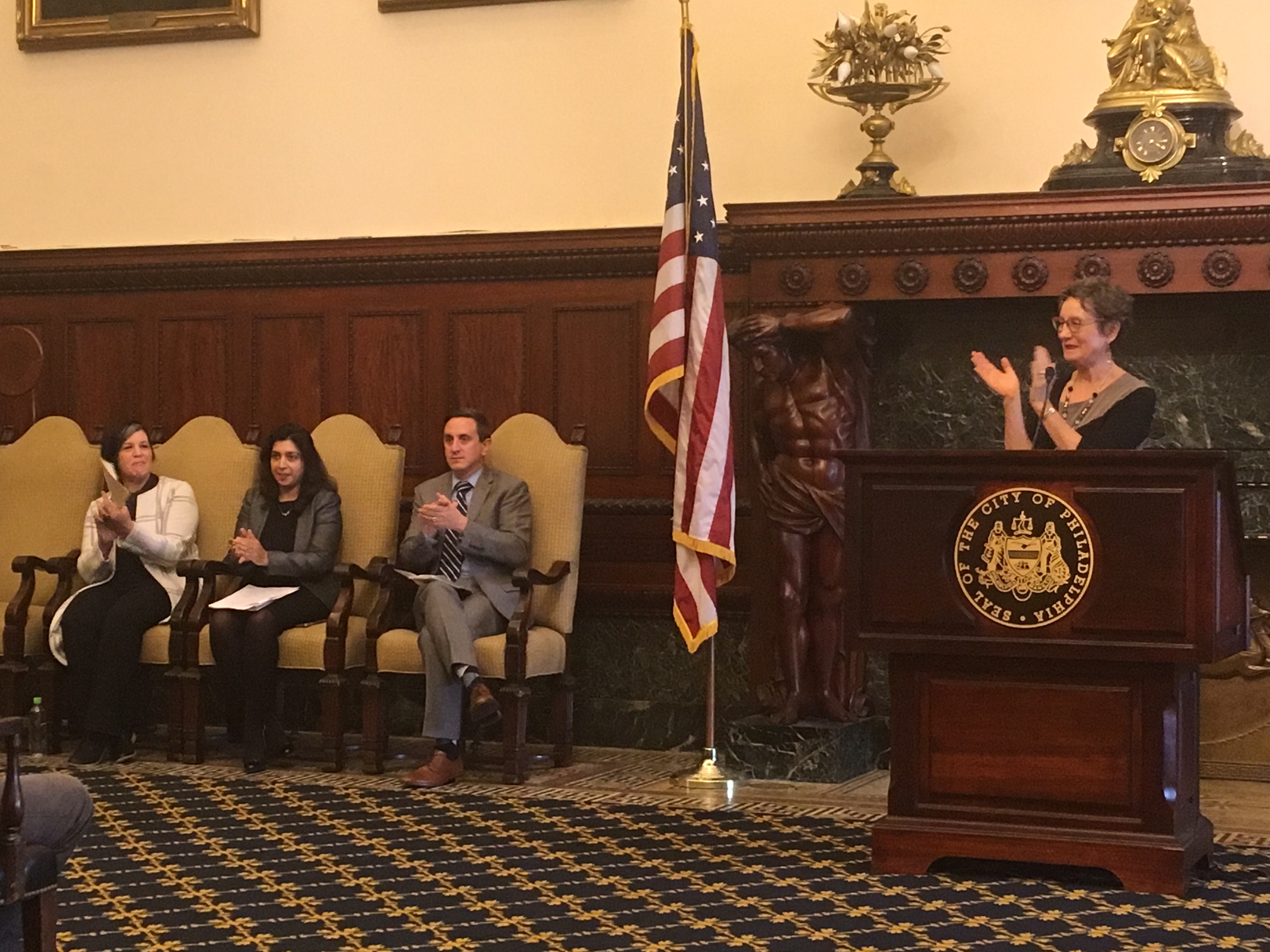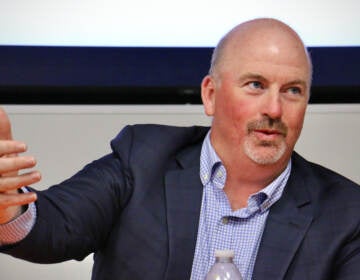New PHL Participatory Design Lab hopes to nudge city bureaucracy into behaving better

On Thursday, Mayor Jim Kenney announced that the Office of Homeless Services (OHS) and the Department of Revenues will be the first two departments to participate in the city’s PHL Participatory Design Lab — a Knight Foundation funded project that aims to use big data and behavioral science to improve city services.
The $338,000 Knight Cities Challenge grant will pay for two 18-month fellowships that will study OHS’s intake process and Revenue’s Owner-Occupied Payment Agreement program. The two fellows, designer Devika Menon and social scientist Nathaniel Olin, will develop tweaks to improve and streamline those processes, relying on modern design methodologies and behavioral economics.
Philadelphia isn’t the first place to jump onboard the behavioral economics bandwagon. President Barack Obama created a Social and Behavioral Sciences Team in 2015, and British Prime Minister David Cameron set up a Behavioral Insights Team in 2010. The impetus for both can be traced directly to the popularity of “Nudge”, a 2008 bestseller by Richard Thaler and Cass Sunstein that introduced the idea of using small tweaks to create big changes to the policymaking world.
Since Nudge came out, Sunstein became a regulatory advisor in the Obama White House, tasked with taking some of the book’s concepts and turning them an improved regulatory scheme. Thaler won the Nobel Prize this year for his work in behavioral economics.
Where regular economic theory assumes that people always act rationally — calculating the pros and cons of every decision like a computer — behavioral economics knows that’s bunk. Humans are emotional and, just as often as not, we go with our guts, not of our heads. But that doesn’t mean people act erratically. It turns out there are discernable patterns to our irrational decisions.
For example, we know that humans are unconsciously lazy when we’re asked to make a choice — we’re built by evolution to avoid wasting energy, and critical thinking is hard work. So, often, rather than think through the choices, people simply go with whatever the default is. When Germany had an opt-in scheme to become an organ donor, just 12 percent of Germans agreed to give up their guts upon death. But in neighboring, German-speaking Austria, residents had to pro-actively opt-out, and 99 percent of Austrians were donors. (PennDOT uses an opt-in scheme on its driver licenses, asking drivers to make a checkmark if they want to be an organ donor.)
The goal of PHL Participatory Design Lab is to find more instances like the opt-in/opt-out switch: Tiny changes in things like standard forms that can produce big results.
Anjali Chainani, director of policy in the Mayor’s Office of Policy, Legislation, and Intergovernmental Affairs, said the city didn’t know yet what changes it would make — and noted that many would likely occur behind-the-scenes — but offered a few general examples of what they’re looking to do.
“The city already collects data on residents that are interacting with city services, so pre-populating a form — that can save a resident time,” said Chainani. She also pointed to an initiative in Washington DC, where the usually-unread legalese on government forms was placed onto a hyperlinked page, shrinking lengthy paperwork into short orders.
This isn’t Philadelphia’s first experiment with using social psychology insights to improve government services. Revenue Commissioner Frank Breslin praised the work of his first deputy, Marisa Waxman, in applying lessons from the emergy social science to ease the city’s introduction of the Actual Value Initiative (AVI) — a multi-year, citywide property value reassessment launched at the end of Mayor Michael Nutter’s administration — and encourage residents to sign up for the Longtime Owner Occupant Program, which helps lower-income residents weather AVI-related increases in their property taxes.
Working with researchers from Columbia University and the University of Pennsylvania, Breslin said, the Revenue Department made big efficiency gains. “One of our initial interventions garnered an additional $615,000 dollars in tax revenues with just a $16,000 investment,” said Breslin, who also credited a 31 percent drop in real estate tax delinquency between 2013 and 2017. “We were really amazed by the potential.”
Revenue is hoping that the Design Lab will be able to help more residents take full advantage of its Owner-Occupied Payment Agreement (OOPA) program, which sets up payment plans for homeowners who are behind on their real estate taxes.
According to Breslin, nearly ten thousand residents had active OOPAs at the end of 2016, but another 1,200 of the OOPAs went into default, offering the Participatory Design Lab team lots of room for improvement.
WHYY is your source for fact-based, in-depth journalism and information. As a nonprofit organization, we rely on financial support from readers like you. Please give today.






